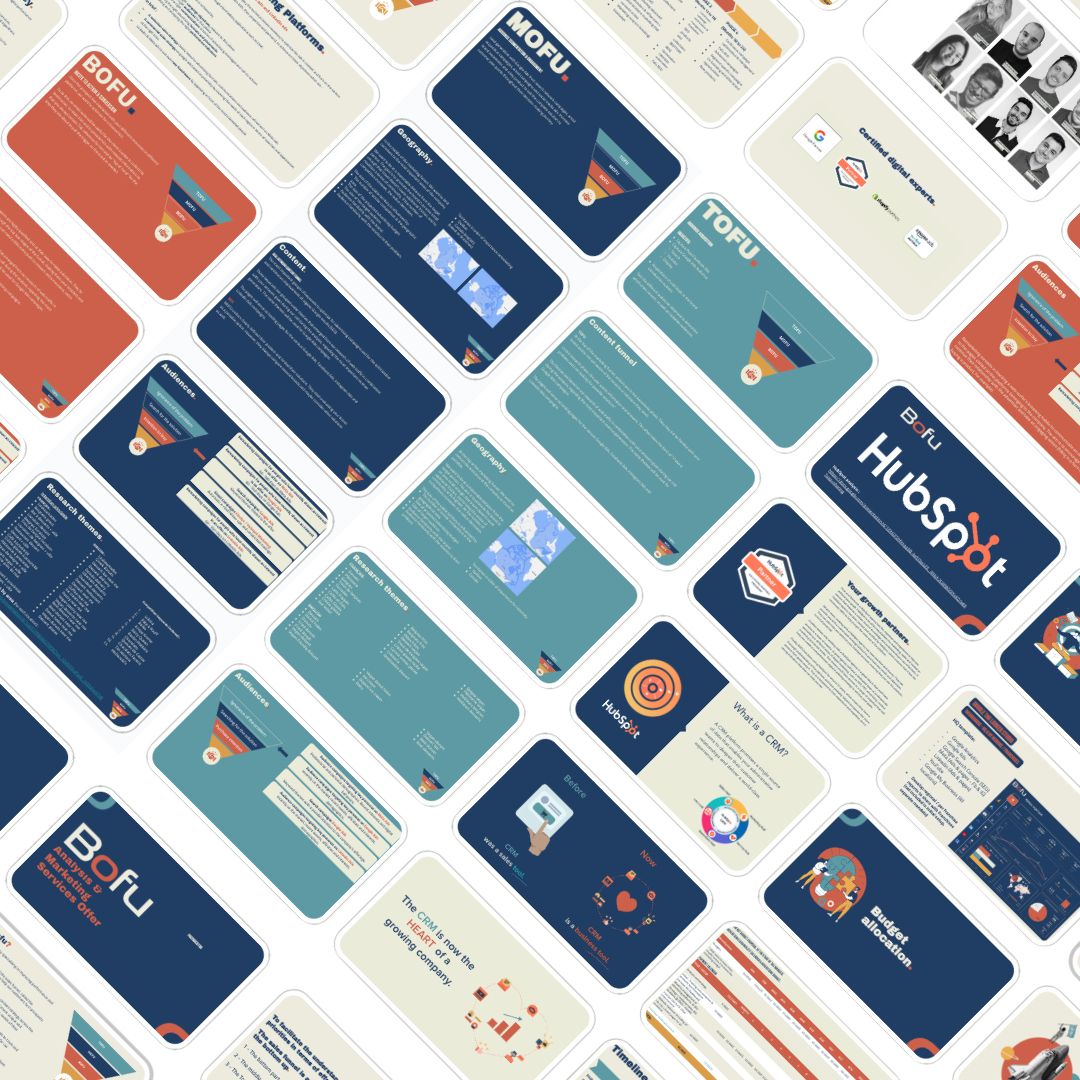Adapted from the master's thesis of Xavier Champoux , with modifications by Bofu.
In digital marketing, attribution is the process of analyzing each step of the user journey before a conversion and assigning a value to each touchpoint. This approach allows businesses to understand how their campaigns and different channels contribute to a conversion, whether it’s a sale or a signup. Choosing the right attribution model is crucial to maximizing return on investment (ROI) by identifying the best-performing channels and optimizing ad spend.
The choice of model directly influences the decisions made, as it can accentuate or minimize the impact of certain touchpoints. Different models can give very different results, which explains the importance of a good selection to obtain a realistic view of marketing performance.
The different types of attribution models
Marketing attribution relies on specific rules specific to each model and also depends on the quality of the data. While some simplistic models, such as first or last click attribution, are still widely used, multi-touch and data-driven models offer a more complete view of the customer journey.
Single-point attribution models
Single-point attribution models attribute the entire conversion value to a single touchpoint, typically the first or last.
• First click : All credit is given to the first touchpoint that introduced the user to the brand. This values the first interactions but neglects the steps that may have been decisive in the final phase.
• Last click : All credit is given to the last touchpoint before conversion, which benefits paid search or retargeting channels but undervalues discovery channels.
Although easy to implement, these models can provide limited insight into the real role of different touchpoints, especially in complex customer journeys.
Multi-touch attribution models
Multi-touch attribution models distribute the value of a conversion across multiple touchpoints, allowing for a more detailed analysis of each channel's contributions.
• Linear model : Each touchpoint receives equal credit for the conversion. This can be useful for a holistic view of the customer journey, but it doesn’t take into account the relative importance of different steps.
• Position-based model : This model attributes 40% of the credit to the first and last touchpoints, distributing the remaining 20% among the intermediate touchpoints. It is particularly suitable for companies looking to value entry and conversion points while recognizing the importance of the intermediate steps.
• Time decay model : This model gives more credit to interactions that occurred just before the conversion, often used for short-term promotions or intensive campaigns.
Data-driven models and artificial intelligence
Data-driven models are becoming increasingly popular due to their ability to adapt to real consumer behaviors by analyzing interactions with collected empirical data. Unlike models based on predefined rules, these models rely on machine learning algorithms to identify which touchpoints contributed the most to conversion.
These models require a large amount of data to be effective, but they allow for advanced personalization of the customer journey and detailed analysis of the impact of campaigns.
Attribution by conversion type: services vs. ecommerce
Service businesses and e-commerce businesses have different customer journeys, requiring attribution models tailored to their specificities.
Allocation in services
Purchase journeys in the services sector tend to be longer and more complex, with multiple touchpoints before the final decision. Customers often seek in-depth information and build trust before committing.
• Recommended model : U-shaped or linear models often work best. The U-shaped model values both initial discovery and final conversion, while recognizing the importance of intermediate interactions, such as review views or sales calls.
• Example : For a service business, a customer might sign up for a newsletter, attend a webinar, and then ultimately purchase after a consultation with a sales representative. Each touchpoint plays an important role in the final decision.
Attribution in eCommerce
The customer journey in ecommerce is often shorter, but involves many touchpoints, such as retargeting ads, promotional emails, and limited-time offers.
• Recommended model : Data-driven models or the time decay model are often preferred in this context. The data-driven model evaluates the contributions of different touchpoints, while the time decay model values the interactions that occur just before the purchase.
• Example : A customer sees an ad on social media, visits the site without purchasing, receives a follow-up email, and returns to complete their purchase via a Google search. A multi-touch model captures the influence of each interaction in this scenario.
The threat of cookies and the importance of first-party data
One of the biggest threats to digital marketing is the gradual decline in the use of third-party cookies , due to new data privacy regulations. Third-party cookies, which track users across sites, have long been a key tool for marketers, but their use is increasingly being questioned.
First-party data vs. third-party data
First-party data is data collected directly by the company through its own channels (website, CRM, direct interactions). It includes information such as purchasing behavior, newsletter signups, and CRM data. In contrast, third-party data is data collected by external entities, often via third-party cookies, to track users across multiple sites.
With the reduction of third-party cookies, first-party data becomes essential to gain an accurate view of the customer journey and maintain effective marketing campaigns. Companies must collect this data directly, relying on tools like CRMs to centralize interactions and personalize campaigns.
The importance of having multiple conversion levels and a CRM
Having multiple levels of conversion is crucial to more fine-grained analysis of customer interactions and optimization of campaigns. Rather than focusing solely on the final conversion (such as purchase), it is important to track micro-conversions , such as adding to cart, signing up for a newsletter, or watching a video. These intermediate steps are key indicators of the level of customer engagement and help adjust marketing strategies in real time.
Integrating a CRM (Customer Relationship Management) helps centralize all this data, track user interactions, and more accurately attribute conversions. A CRM also helps improve personalization by providing a unified view of the customer journey across multiple channels.
Conclusion
Choosing the right attribution model is a key strategic decision for any company looking to optimize its marketing campaigns. Multi-touch, data-driven, or AI-powered models provide a more accurate view of the customer journey, but require quality data collection and the use of the right tools.
Whether you’re managing conversions in services or ecommerce, it’s crucial to choose a model that properly values each touchpoint. The growing importance of first-party data , CRM integration, and the implementation of intermediate conversion levels help ensure a complete view of the customer journey, even in a world where cookie usage is increasingly restricted.










